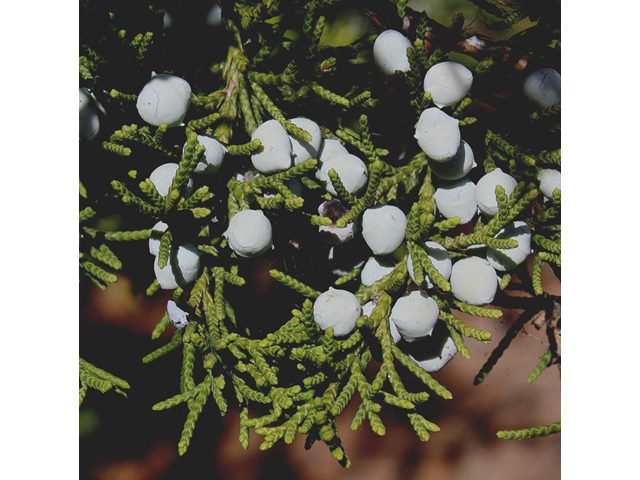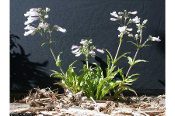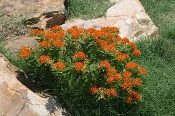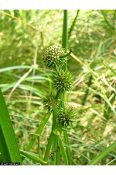Juniperus virginiana, Eastern Red Cedar 12-18″ Wholesale Native Bare Root Trees Evergreen Trees SALE!!
$1.60 Original price was: $1.60.$1.20Current price is: $1.20.
Out of stock
Juniperus virginiana, Eastern Red Cedar 12-18″ Wholesale Native Bare Root Trees
An order minimum of 50 of this size/species is required.
Wholesale pricing is based on quantity.
50 or more $1.60 each Sale 25% Off $ 1.20 each
For Shipping, Install and additional info please see “About Bare Root“.
Native bare Root Trees are cut and shipped while dormant, late November to early spring.
See all available wholesale native trees for sale Bare Root Trees
Order Minimum
There is a minimum order total of $150.00.
before tax (VA residents only) and shipping.
There are NO EXCEPTIONS.
Description
Juniperus virginiana, Eastern Red Cedar 12-18″ Wholesale Native Bare Root Trees
Juniperus virginiana, also known as eastern redcedar, red cedar, Virginian juniper, eastern juniper, red juniper, and other local names, is a species of juniper native to eastern North America from southeastern Canada to the Gulf of Mexico and east of the Great Plains.
Juniperus virginiana L.
Eastern Red Cedar, Eastern Redcedar, Virginia Juniper, Red Juniper, Pencil Cedar, Carolina Cedar, Red Savin
Cupressaceae (Cypress Family)
Synonym(s):
USDA Symbol: juvi
USDA Native Status: L48 (N), CAN (N)
Evergreen, aromatic tree with trunk often angled and buttressed at base and narrow, compact, columnar crown; sometimes becoming broad and irregular. Pyramidal when young, Eastern Red Cedar mature form is quite variable. This evergreen usually grows 30-40 ft. but can reach 90 ft. Fragrant, scale-like foliage can be coarse or fine-cut, and varies in color from gray-green to blue-green to light- or dark-green. All colors tend to brown in winter. Pale blue fruits occur on female plants. Soft, silvery bark covers the single trunk.
The most widely distributed eastern conifer, native in 37 states, Eastern Red Cedar is resistant to extremes of drought, heat, and cold. Red Cedar can be injurious to apple orchards because it is an alternate host for cedar-apple rust, a fungal disease. First observed at Roanoke Island, Virginia, in 1564, it was prized by the colonists for building furniture, rail fences, and log cabins.
Plant Characteristics
Duration: Perennial
Habit: Tree
Leaf Retention: Evergreen
Leaf Complexity: Simple
Fruit Type: Cone
Size Notes: Up to about 90 feet tall.
Leaf: Green
Fruit: Seed cones bluish black to brownish blue. Though technically incorrect, the seed cones are often referred to as berries.
Bloom Information
Bloom Color: Green , Purple , Brown
Bloom Time: Mar , Apr , May
Distribution
USA: AL , AR , CO , CT , DC , DE , FL , GA , IA , IL , IN , KS , KY , LA , MA , MD , ME , MI , MN , MO , MS , NC , ND , NE , NH , NJ , NY , OH , OK , OR , PA , RI , SC , SD , TN , TX , VA , VT , WI , WV
Canada: MB , NS , ON , QC
Native Distribution: N.S. to SD, s. to n. FL & c. TX
Native Habitat: Fence rows, Woodlands’ edge, Opening, Prairie, Plains, Meadows, Pastures, Savannas
Growing Conditions
Water Use: Low
Light Requirement: Sun , Part Shade , Shade
Soil Moisture: Dry
Soil pH: Circumneutral (pH 6.8-7.2)
CaCO3 Tolerance: High
Drought Tolerance: High
Cold Tolerant: yes
Heat Tolerant: yes
Soil Description: Dry, limestone soils (adaptable). Sandy, Sandy Loam, Medium Loam Clay Loam, Clay, Rocky, Limestone-based, Caliche type.
Benefit
Use Ornamental: Grown for Christmas trees, shelterbelts, and in many cultivated varieties for ornament.
Use Wildlife: The juicy “berries” are consumed by many kinds of wildlife, including the cedar waxwing, named for this tree. The fruits are a staple for many birds and small mammals. Also provides nesting material and cover.
Use Food: Juniper tea can be made by placing a dozen young berryless twigs in a quart of cold water; bring to a boil then allow to simmer for 10 minutes. Strain and use as regular tea, in small quantities. (Poisonous Plants of N.C.) The earliest colonists recognized the value of the Virginia Juniper from the start – for fences and shingles, benches and tables, coffins and the superstructures of boats. (Peattie)
Use Medicinal: Tea of fruits and leaves for coughs and colds. Berries chewed for canker sores in mouth. (Kindscher) Creeks and Choctaws drank oil from red cedar berries for dysentery. Boiled fruit and leaves make a drink for colds and coughs. Smoke from smoldering leafy twigs inhaled for head colds. Kiowas chewed berries and held liquid in mouth as a mild antiseptic rinse. An unnamed part of this juniper was used by Natchez as a specific for mumps.(Weiner) Zuni women took juniper berries to promote uterine recovery after childbirth. Treated wound infections and arthritis. (Castleman) Smoke from the leaves as was used as an inhalant to treat Colds, Bronchitis and Rheumatism. It is thought to contain an anticancer agent, podophyllocotoxin. Fruit tea used for colds, worms, rheumatism, coughs, induce sweating. Leaf smoke or steam inhaled for colds, bronchitis, rheumatism.
Use Other: The aromatic wood is used for fenceposts, cedar chests, cabinetwork, and carvings. Cedar oil for medicine and perfumes is obtained from the wood and leaves. The heartwood was once almost exclusively the source of wood for pencils; Incense Cedar ( Calocedrus decurrens Torr.) is now used instead. Incense for purification and ritual.
Warning: POISONOUS PARTS: Fleshy cones (resembles berries), leaves. Low toxicity when ingested; large amounts may cause diarrhea. Toxic Principle: Volatile oils including thujone.
Interesting Foliage: yes
Fragrant Foliage: yes
Attracts: Birds , Butterflies
Larval Host: Olive butterfly.
Juniperus virginiana L. var. virginiana, Eastern Red Cedar
An order minimum of 5 of this size/species is required.
Wholesale pricing is based on quantity.
50 or more $1.60 each
For Shipping, Install and additional info please see “About Bare Root“.
Native bare Root Trees are cut and shipped while dormant, late November to early spring.
See all available wholesale native trees for sale Bare Root Trees
Related products
-

Penstemon hirsutus, Hairy Beardtongue, Native Perennial Plant Plugs, Native Wildflowers, Native Pollinator Support Plants, Organically Grown
$7.50 Add to cart -

Asclepias tuberosa, Butterfly Weed, Organically Grown Native Perennial Plugs, Native Wildflowers, Native Pollinator Support Plants
$8.00 Add to cart -

Sparganium americanum, American Bur-reed, Native Grasses, Perennial Grass Plugs, Wetland Plant, VA Ecotype
$6.00 Add to cart -

Vernonia noveboracensis, New York Ironweed, Wholesale Native Perennial Plant Plugs, Native Wildflowers, Native Pollinator Support Plants, Organically Grown, VA ecotype
$7.50 Add to cart




